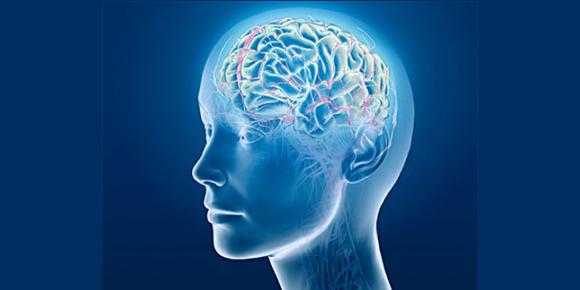
“Use your imagination.” You’ve probably heard this phrase since before you can remember.
It was your imagination you were using to create your first finger painting; your imagination that let you visualize what it might be like to make out with your high school crush; your imagination that helped you dream up the idea for your business or book or the house you’ll one day build.
But when you use your imagination, what exactly is at work?
Thanks to new research from psychology graduate student Stefania Ashby at Brigham Young University, we’re now a lot closer to answering that question.
In a new study, Ashby and her faculty mentor at BYU devised experiments using MRI technology that would help them distinguish pure imagination from related processes like memory. The results of their analysis are helping scientists learn more about where and how imagination happens in our brains.
“I was thinking a lot about planning for my own future and imagining myself in the future, and I started wondering how memory and imagination work together,” Ashby said. “I wondered if they were separate or if imagination is just taking past memories and combining them in different ways to form something I’ve never experienced before.”
MRI scans distinguish imagination from memory
There’s a bit of scientific debate over whether memory and imagination truly are distinct processes. So Ashby and her faculty mentor devised MRI experiments to put it to the test.
They asked study participants to provide 60 personal photographs for the “remember” section of the experiment. Participants also filled out a questionnaire beforehand to determine which scenarios would be unfamiliar to them and thus a better fit for the “imagine” section.
The researchers then showed people their own photographs during an MRI session to elicit brain activity that is strictly memory-based. Next, they repeated the MRI sessions, only this time the subjects were presented with unfamiliar stimuli to elicit imagination-related brain activity.
The analysis comparing the MRI data revealed distinctive patterns for memory and imagination, the researchers report.
“We were able to see the distinctions even in those small regions of the hippocampus,” Ashby said. “It’s really neat that we can see the difference between those two tasks in that small of a brain region.”
Ashby co-authored the study with BYU psychology and neuroscience professor Dr. Brock Kirwan for the journal Cognitive Neuroscience. Kirwan studies memory at Brigham Young University, and Ashby is one of many students that he has mentored.
“Stefania came in really excited about this project, she pitched it to me, and basically sold it to me right there,” Kirwan said. “It was really cool because it gave me a chance to become more immersed and really broaden my horizons.”
Why is imagining important?
 When you look at the image of the apple to the right on your computer monitor, an apple exists in two places: as a picture on your monitor and as an activation pattern in your brain. If you close your eyes and imagine an apple, an apple exists, but only in one place — in your brain. That is the difference between perception and imagination.
When you look at the image of the apple to the right on your computer monitor, an apple exists in two places: as a picture on your monitor and as an activation pattern in your brain. If you close your eyes and imagine an apple, an apple exists, but only in one place — in your brain. That is the difference between perception and imagination.
While imagining the appearance of an apple may not seem very important, the general role of imagination in human thought is critically important, probably much more important for humans than other species.
Imagination is the creation and manipulation of brain models when there is no “stimulus” in the current environment. We spend hours a day using imagination:
- Planning a Route: Standing at a choice point, imagining various routes and selecting the best one.
- Creating a Strategy: Having a task, and imagining various possible solutions until an optimal solution is found.
- Recalling a Memory: For example, remembering the first day of school.
- Reading and Enjoying a Novel: The written words of the novel elicit images and narrative of objects and events that are not present.
- Being Creative: Any creative action involves imagining the outcome before creating the product. This applies to all aspects of endeavor, from art, to personal relations to science.
- Understanding Historical Timelines: The timeline is in the mind, not in the world.
- Day Dreaming
- Hallucinating
